Belvoir House: art, design, and scenic views in Launceston, Tasmania
This property in Launceston is beautifully designed and all the stunning art on the walls is for sale thanks to the artist owner.
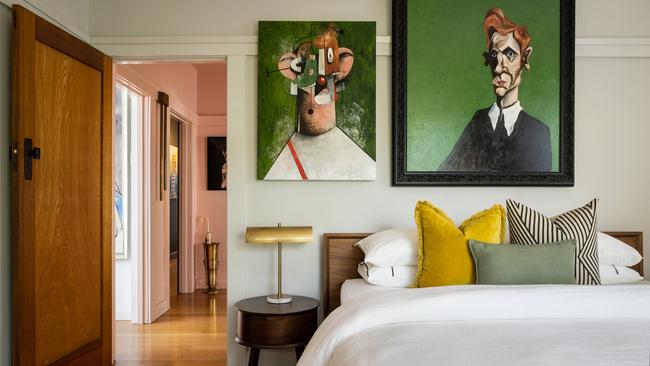
There are colourful paintings large and small on nearly every wall. Among a few abstracts are portraits variously showing the influence of artists such as Picasso, Bacon or Whiteley. I’m not in a gallery, however, but a house in West Launceston, and these couple of dozen striking works are all by co-owner John Wren.
Belvoir is both part-time home and studio for the otherwise Brisbane-based artist, and also a calling card for his work.
“All the art is for sale,” he tells me, explaining that it’s easier to visualise it in one’s home within this domestic setting than in a spartan gallery. And what a setting it is. The 1935 house’s interior design riffs off original features with Art Deco and other 20th-century styling, as well as bold contemporary touches. The senses are excited by colours and textures at every turn.
The art is Wren’s, but most of this adventurously sophisticated design was conjured by his wife, Catherine. They purchased Belvoir in 2020, sight unseen but for online photos. Confined to Brisbane by Covid, they needed no more than a builder’s assessment that “they don’t make ’em like they used to”.
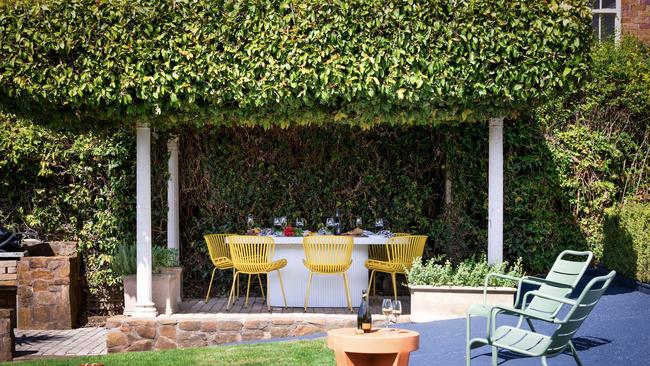
Built into a hill, what appears from the street to be a modest single-storey Art Deco cottage is revealed as a three-level home from the backyard. The semi-basement is a practical area including laundry and Wren’s studio (off-limits to guests). I gravitate toward the main floor’s living room, warmed by a combustion wood heater built into the hefty fireplace, and luxuriously soft throws from Launceston’s Waverley Mills. The distinctive original Deco pendant light’s cousin is in the adjoining dining room. This space also features a drinks cabinet from the same era with lustrous wood veneer and a standing lamp topped not with a shade but an eruption of white ostrich feathers, which is one of Belvoir’s most eye-catching contemporary elements.
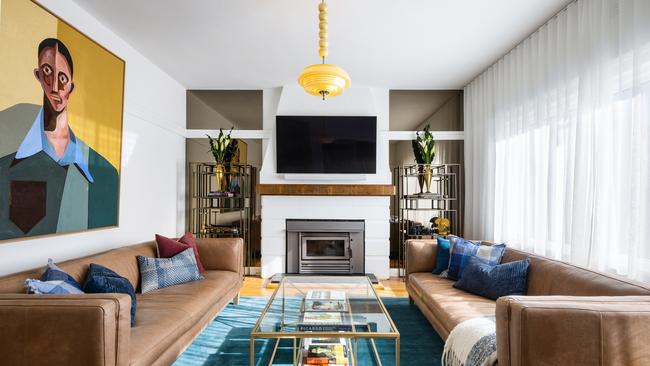
Another 21st-century addition is a jumbled rope of light just beyond in the hallway. It leads to a bathroom where tomato-red walls meet gleaming black tiles, which line the shower and even its ceiling. Like the blue-and-black bathroom upstairs (converted from a walk-in wardrobe by the Wrens), this moodily glamorous aesthetic is among Belvoir’s most daring design choices, but even with every light on it’s not ideal for applying make-up or shaving.
From the main floor, which also includes a bedroom, modern galley kitchen and study, I ascend unusually narrow stairs. The solid banister echoes wood panelling found here and there, and polished floorboards throughout the house that are usually the backdrop for statement rugs. Upstairs, the colour scheme in one bedroom is green, including painted walls; the other chocolate and pink.
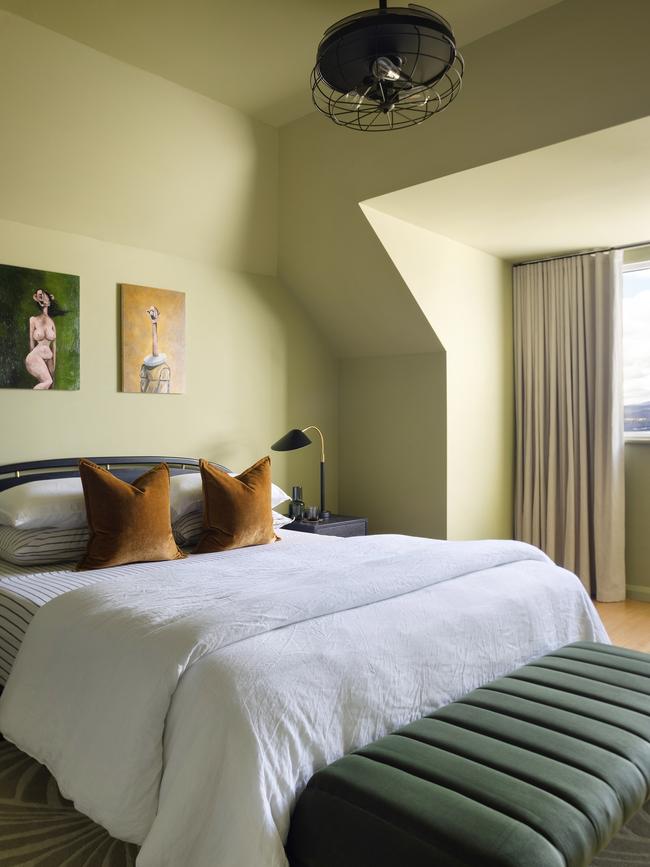
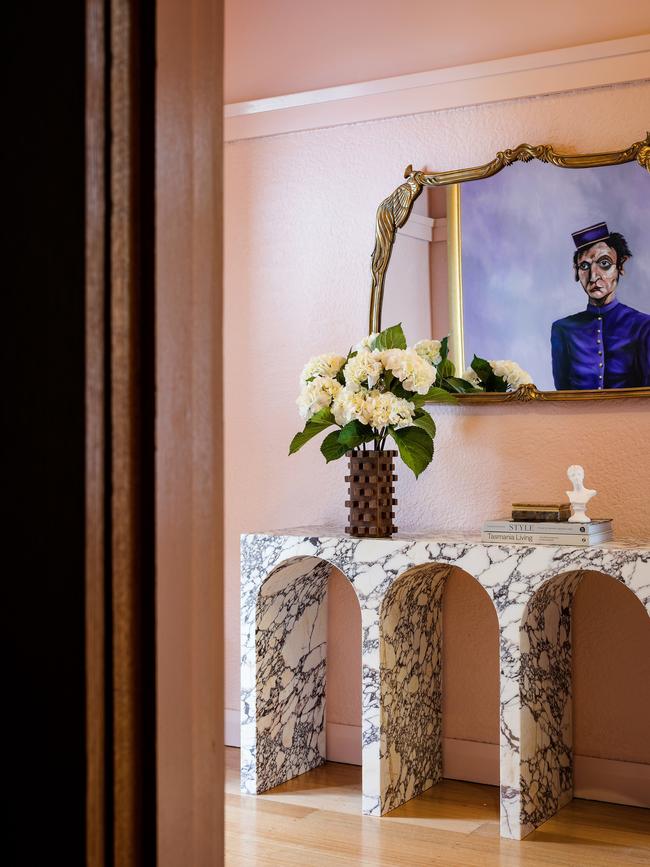
Apart from Wren’s art, this level’s main space leans towards black and white, and is dotted with restrained mid-century and post-modern furniture suggestive of a sitting room, with books about art, design and Tasmania, and the house’s largest windows, which reveal a panorama of Launceston below and mountains beyond. Evidently this is why the original owners branded that modest facade “Belvoir” – beautiful view in French.
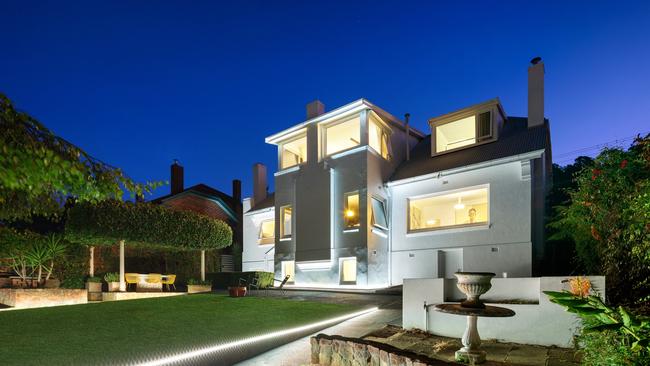
Even in my brief time here during somewhat grey weather I’m impressed by the vista, but Wren has seen it in all conditions, and with an artist’s eye. “You get these reveals of the mountain range as the sun slowly creeps through, highlighting the different peaks and troughs,” he says. He describes colours, spotlights through clouds, the city vanishing under a “meandering river of fog”, and the mountain, Ben Lomond, snow-capped in winter. The sitting room’s brass telescope mounted on a tripod is not there only for its stately good looks.
Wren likes being able to watch the city from a distance here or engage with its “smaller-town feel” after a short drive or walk, whether that be to CBD galleries or swimming at Cataract Gorge, Launceston’s favourite green space. He also likes being in the Tamar Valley wine region within 15 minutes.
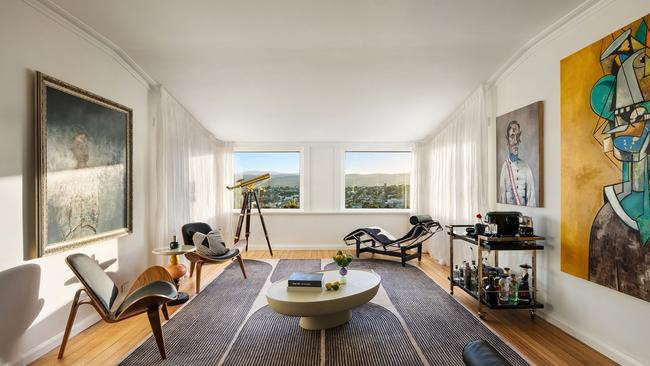
Between the view and Belvoir’s myriad fascinations, including the regularly refreshed art collection, I’m not inclined to go anywhere. I envision relaxing in the substantial backyard, perhaps lazing on the lawn or lunching at the table under a bower of vines, but it’s not the day for it. Instead, the lemon tree, heavily laden with fruit, and that magnificent drinks cabinet inspire a gin and tonic by the fire. I sip to the period-appropriate sound of jazz beckoned from Belvoir’s Google Nest speakers, and soak up the complementary creativity of John and Catherine Wren.
Discover
Queen Victoria Museum and Art Gallery’s varied collection includes local landscapes by early colonial painter John Glover. Design Tasmania showcases contemporary creativity, from textiles to woodwork.
Relax
Cataract Gorge Reserve is strolling distance from Belvoir. Its attractions cover formal gardens and wilderness trails, including along the South Esk River, scenic chairlift, roaming peacocks, and swimming in the public pool and natural “first basin”.
Eat
The Gorge Restaurant serves lunch and high tea in the reserve. A riverside restaurant in a heritage mill, Stillwater is consistently rated among Tasmania’s best fine-dining options. Newish kid on the block Tatler Lane by Sweetbrew is a top option for cafe fare.
Drink
The Tamar Valley wine region is on Launceston’s doorstep, with the nearest cellar door being Josef Chromy. The region is known for pinot noir, chardonnay, riesling and, in the north, internationally renowned sparkling by vineyards such as House of Arras, Clover Hill and Jansz. For city sips, settle into Havilah wine bar.
Essentials
About 1km west of Launceston’s CBD, Belvoir sleeps up to six. It’s available for $500 a night plus $300 cleaning fee for any length of stay, with a minimum of two nights.
Patricia Maunder was a guest of Belvoir.
If you love to travel, sign up to our free weekly Travel + Luxury newsletter here.

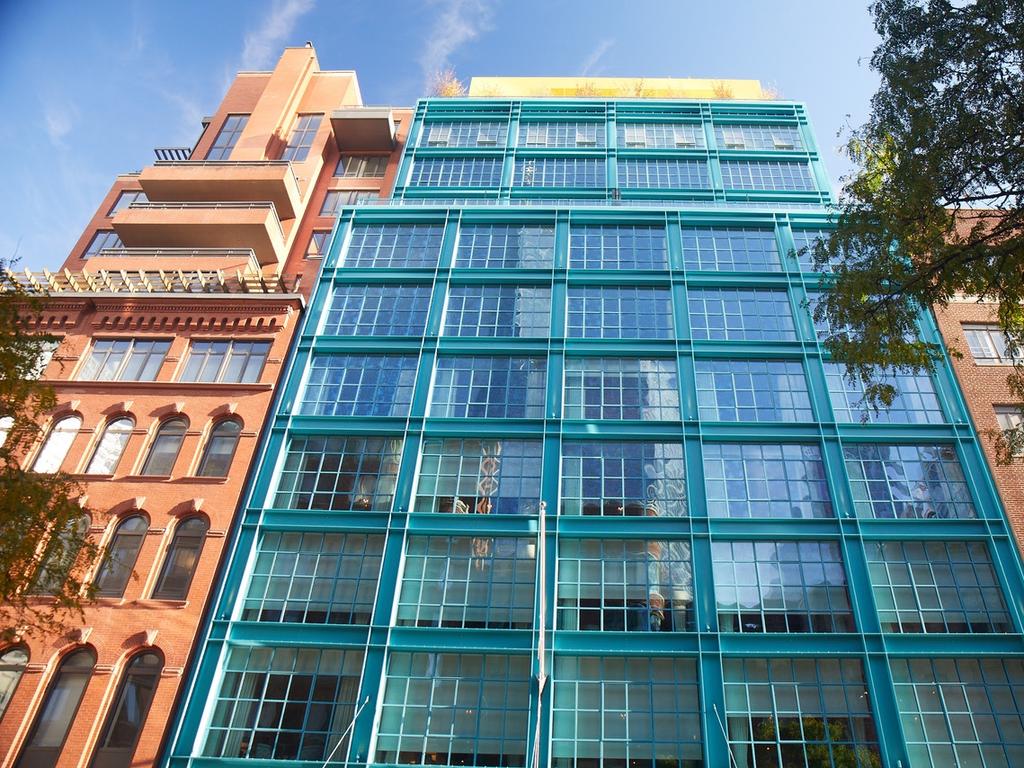
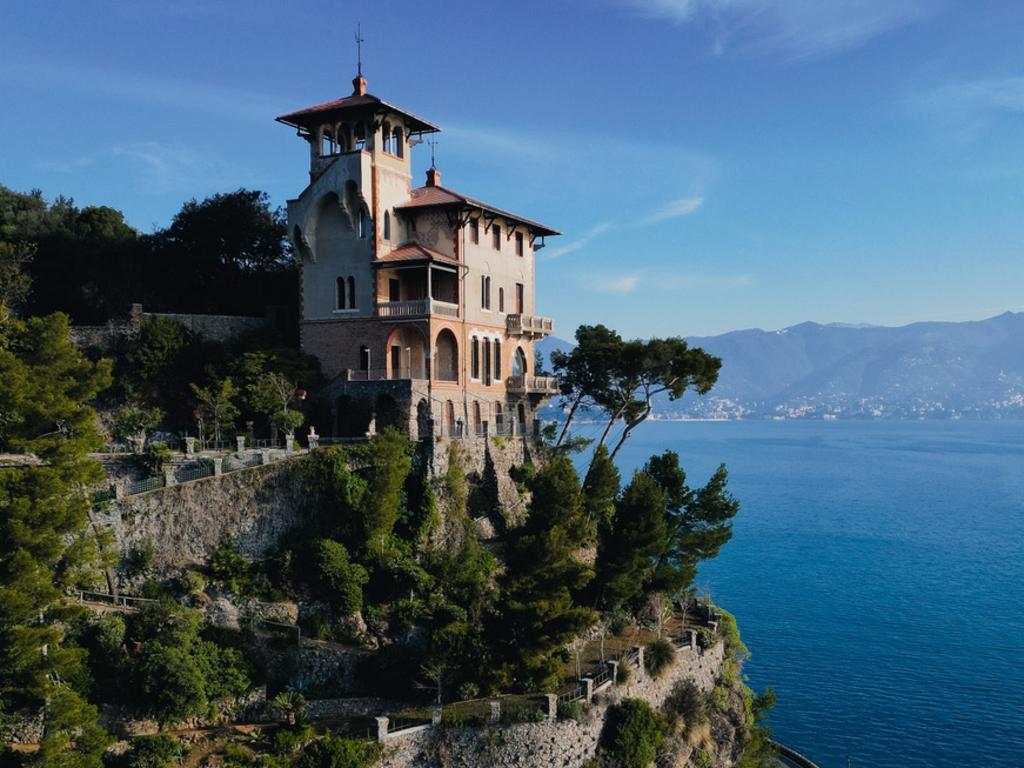
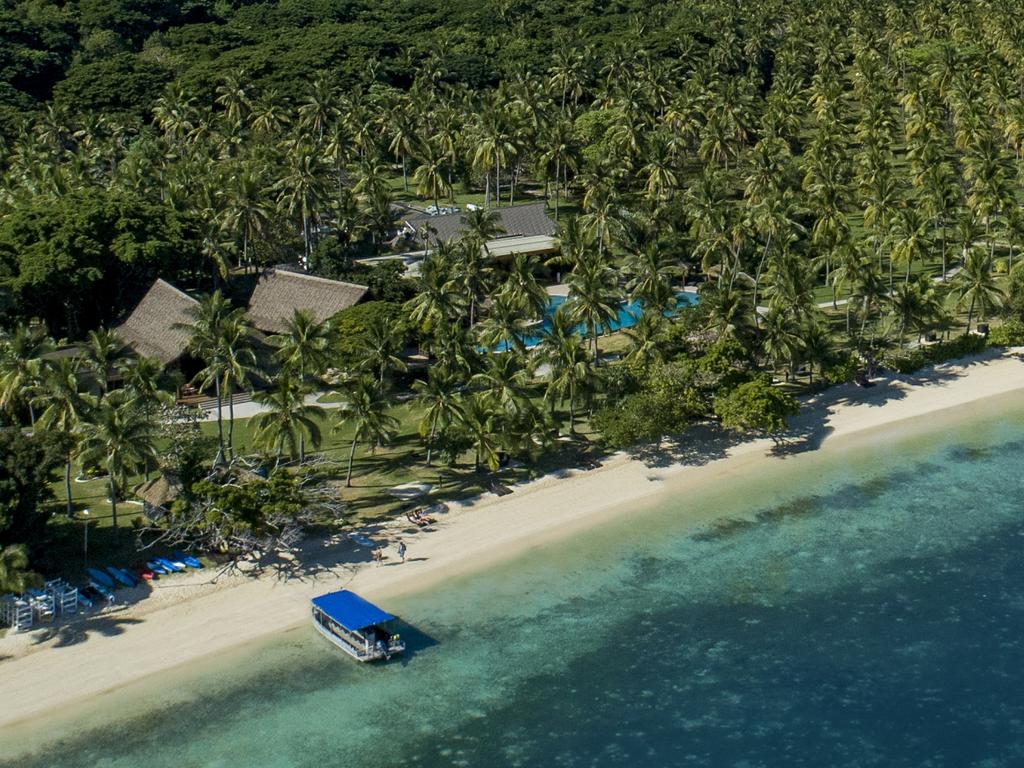
To join the conversation, please log in. Don't have an account? Register
Join the conversation, you are commenting as Logout